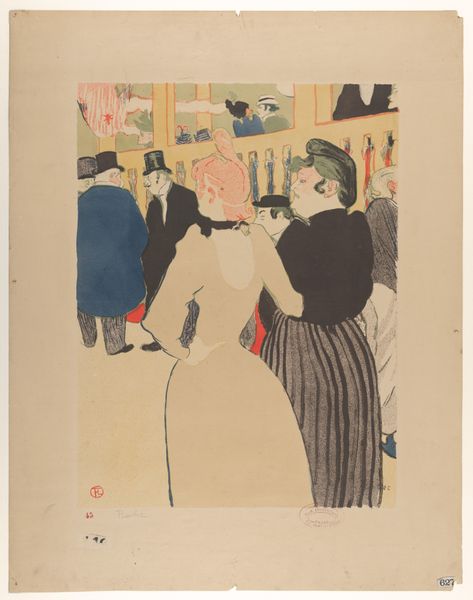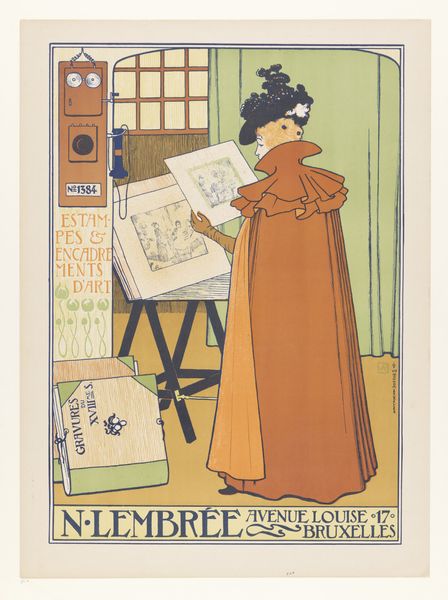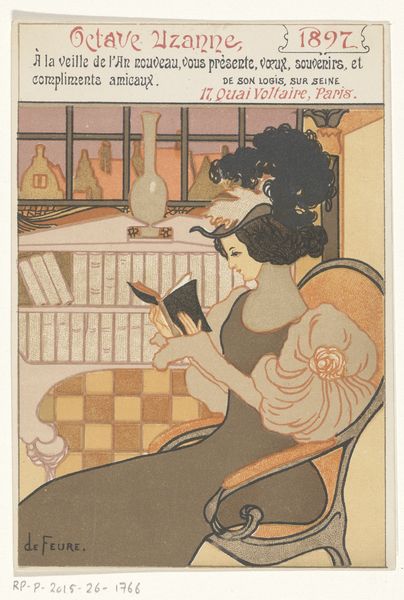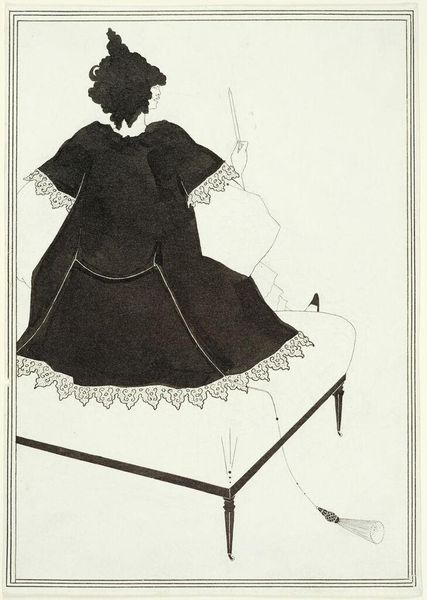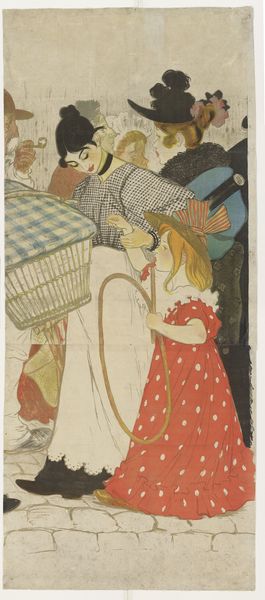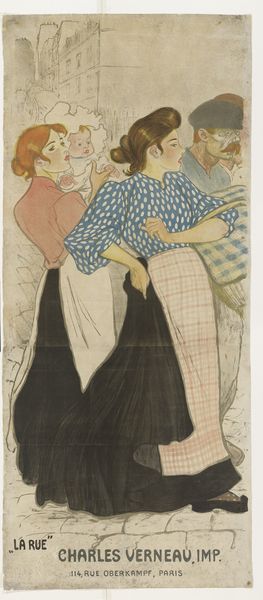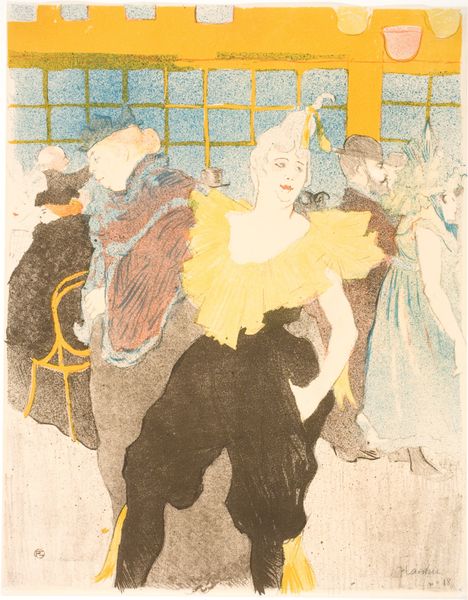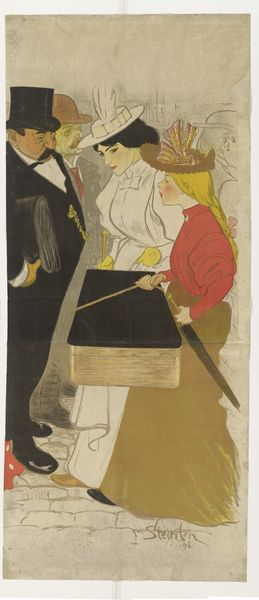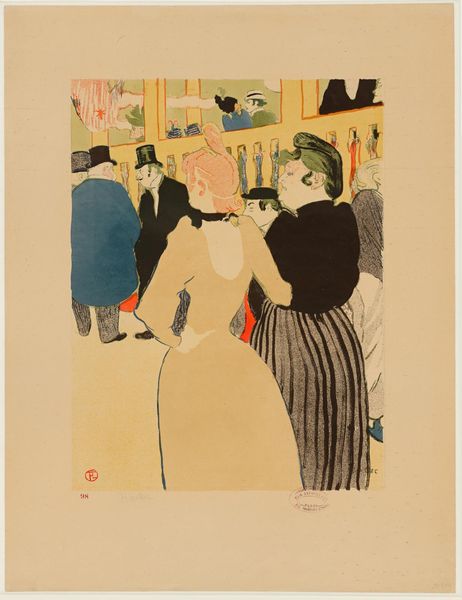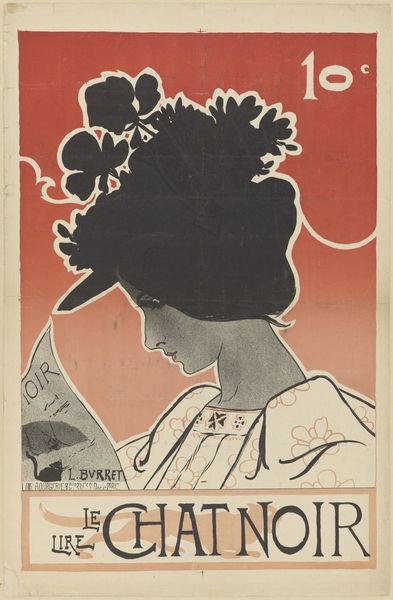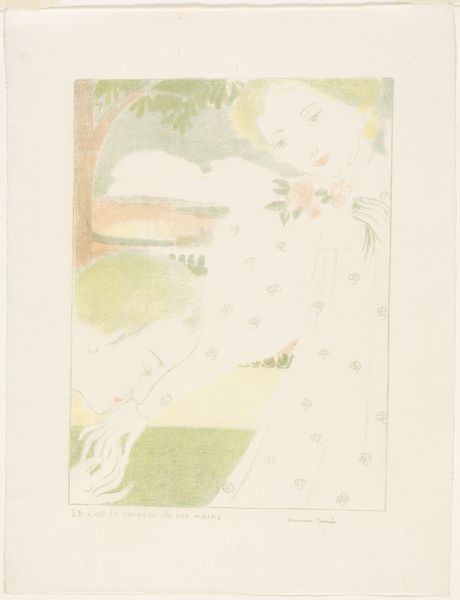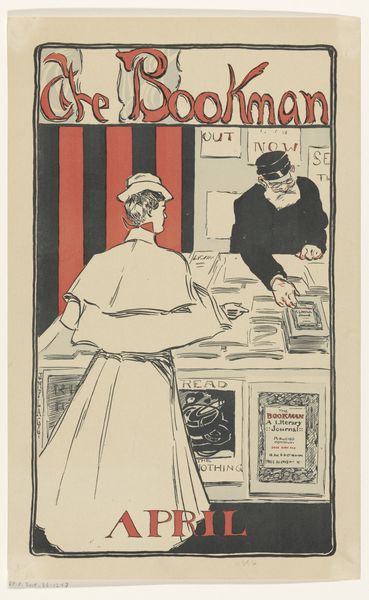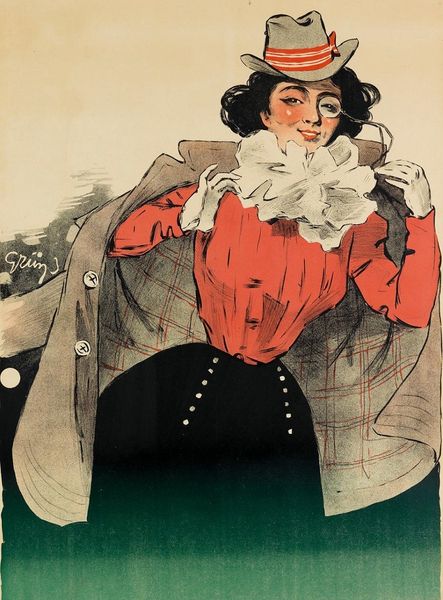
lithograph, print, poster
#
portrait
#
art-nouveau
#
lithograph
# print
#
caricature
#
caricature
#
figuration
#
poster
Dimensions: height 354 mm, width 217 mm
Copyright: Rijks Museum: Open Domain
Curator: This lithograph from 1897, titled "Zittende vrouw bekijkt prenten in een prentstandaard", is by Armand Rassenfosse. The title translates to "Seated woman looking at prints in a print stand". It certainly feels evocative of its time. Editor: Yes, the composition gives a charmingly old-fashioned sensibility with its pale yellow frame and the array of posters visible behind the sitter, doesn't it? It's hard not to focus on the reproduction quality too. You can really see the grain of the lithograph. Curator: Absolutely. Notice how Rassenfosse organizes the space. The female figure is anchored, of course, seated centrally, with those vertical poster images arranged formally to create a sense of depth. Semiotically, it's fascinating. What does the implied layering convey to us? Editor: For me, the posters become almost a wallpaper—they represent a decorative consumption, mass produced and very different from fine art. The labour behind printing, the inks, the stones... that contrasts against the woman’s white dress and gloves and speaks to a divide in experience and status. Curator: Good point! The composition emphasizes a certain order, those receding planes structured into careful parallel lines. Even the fold-up stand she sits upon creates repeating, linear shapes. Yet that art nouveau line in each poster fights for attention. The tension really enlivens it. Editor: It really highlights that period's burgeoning print culture. To have her studying prints, to emphasize that reproductive quality... It seems almost to suggest these posters—normally ephemeral commercial objects—as works worthy of study themselves. Who made them, who bought them, who used them? Curator: It’s all carefully orchestrated; that the posters' individual images are secondary to the total construction of visual intrigue. Editor: Right, the materiality, that lithographic process itself becomes the story—not merely the image it bears. This changes the work itself in important ways. Well, I certainly feel newly thoughtful about turn-of-the-century advertising! Curator: A fascinating piece. Indeed, let’s allow others now to form their own conclusions!
Comments
No comments
Be the first to comment and join the conversation on the ultimate creative platform.
